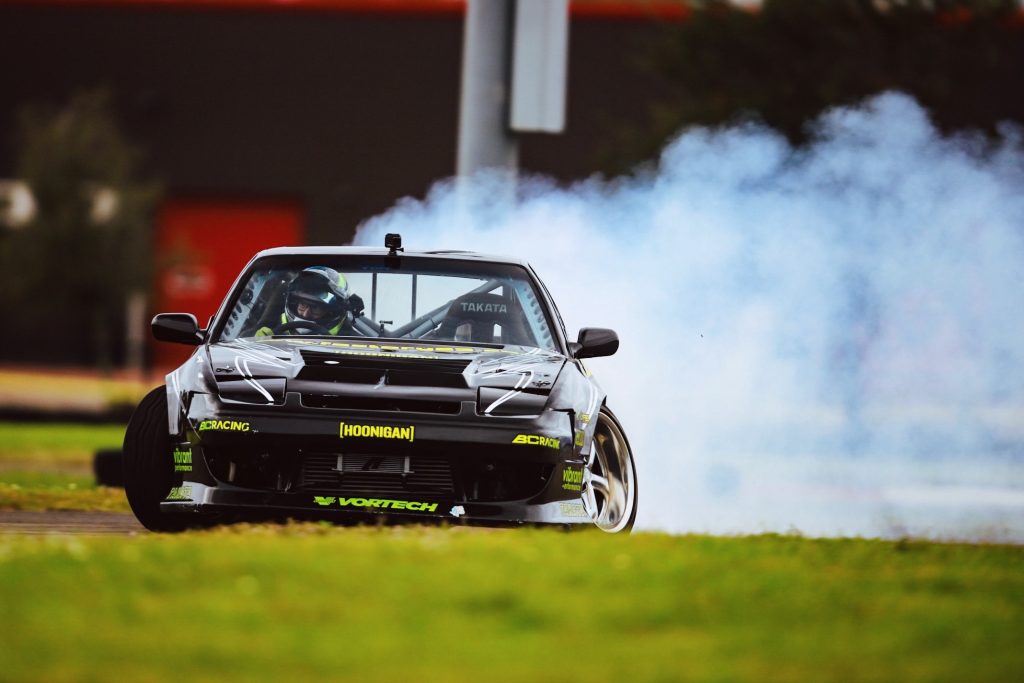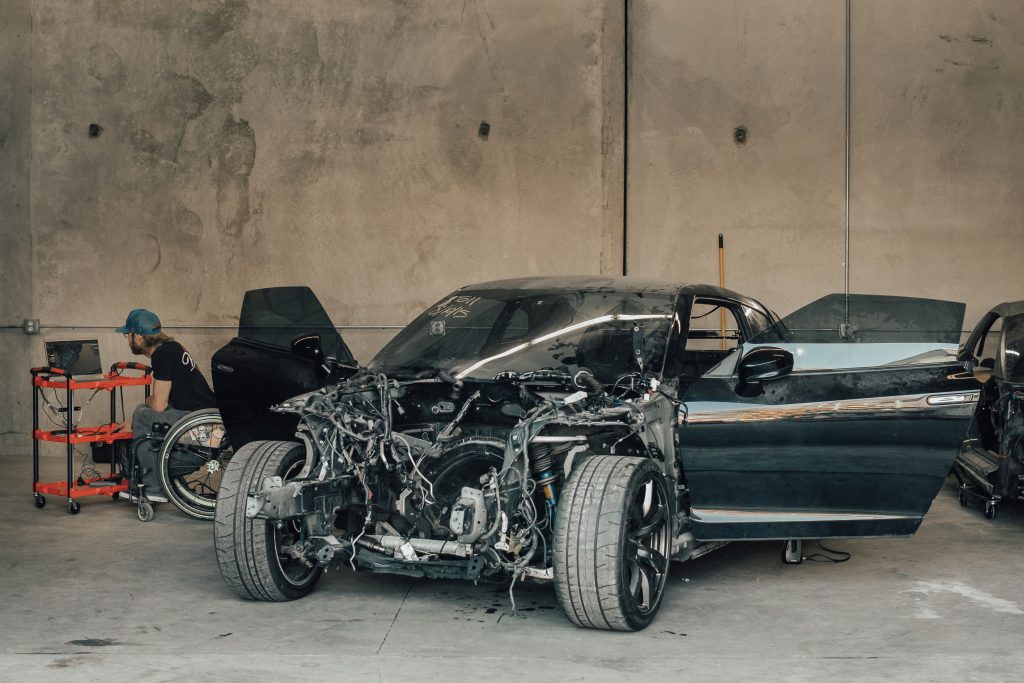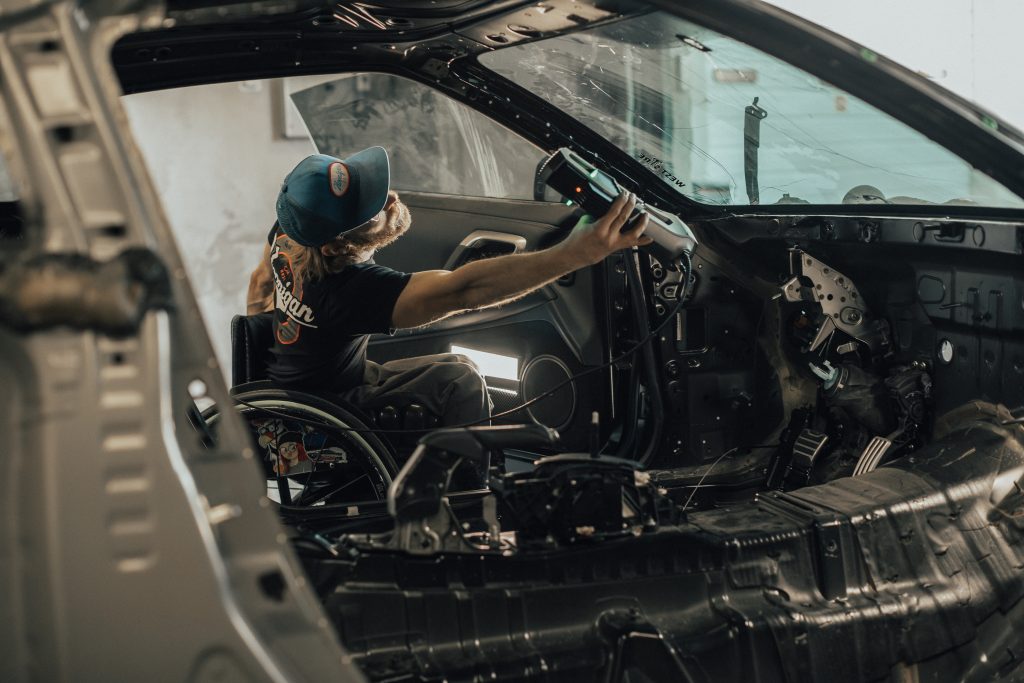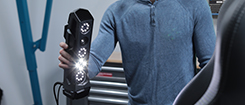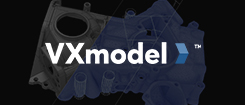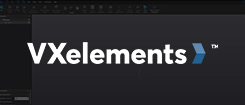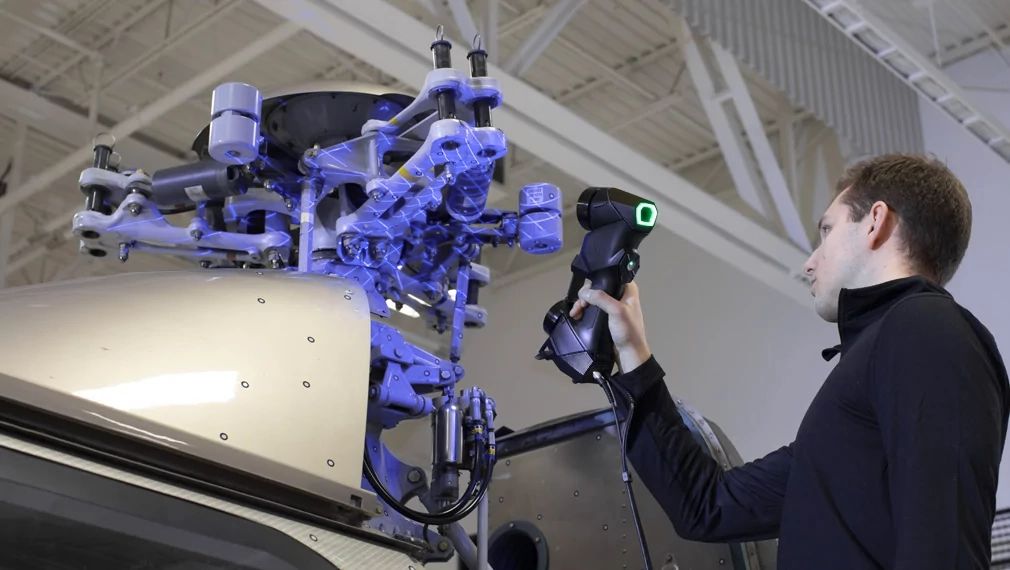July 24, 2024
Improving Vessel Integrity at a Refinery thanks to Advanced 3D Scanning Technology See the article
At the starting grid, race cars stand completely still, but their engines roar so loudly that spectators vibrate on their seats, impatient to see them storm the track. When the signal is given to start the race, drivers get their best jump on the green flag, eager to roam the track, overtake their opponents, and rally under the checkered flag to the cheers of their team and supporters.
Motorsport has the power to excite and entertain millions of fans around the world.
Although a fascinating sport, racing is also a dangerous one due to crashes. Cars plowing through guard-rails at high-speed, rolling over, and landing in a misshapen heap fifty feet from where they started can shake those with the most stalwart emotions. This is why safety comes first.
The safest practice to minimize the risk of injury would be to put the driver in a suit of armor. However, doing so would make it inconvenient and unmanageable for drivers to perform the racing maneuvers required to win. Instead, a cage protects the driver from getting crushed in the event of an impact. Made from approximately 40 meters of high-tensile steel, the roll cage plays a vital function: it enables the passenger cabin to stay in one piece, shielding the driver from severe danger.
Over the years, many mechanics, designers, and engineers have combined their expertise with technology in order to develop better roll cages. They are always looking to answer the following questions:
- How can they develop a roll cage that is rigid enough to withstand crash impacts yet flexible enough to dissipate the energy away from the driver?
- How can they design a roll cage that perfectly fits the vehicle chassis on the first try?
- How can they create a roll cage that can be installed easily and efficiently within a few hours?
With his Creaform Go!SCAN SPARK in hand, car enthusiast Rob Parsons, also founder of the Chairslayers Foundation, managed to answer these questions brilliantly. His answer: CageKits, his new project. Let’s see how 3D scanning technology has helped him to develop a better design process that leads to a quality product that fits perfectly on the first try and offers better structural benefits to his customers.
How to Build a Solid Product Development Process
CageKits’s foundation is based on a solid product development process. Indeed, a 3D model is the starting point for every roll cage kit. The 3D model is obtained from a 3D scan of the car’s full interior. The 3D scanning session is also an occasion for Rob to visit his fellow racing enthusiasts who are just as passionate about racing and drifting as he is. Over the course of his journey, he has also built an exhaustive database of different racing cars. He can use this library of chassis to design his roll cage kits.
Once he’s captured the 3D data with the Go!SCAN SPARK, Rob uses Solidworks to create his unique roll cage kits. Logically, the design starts with the main hoop, followed by the diagonal braces and the harness bar. The front, roof, and rear bars are next. When everything looks good with all six mounting points, Rob focuses on the door bars, which vary depending on whether he’s adding a lot of clearing for elbow room or a low-profile door bar. Finally, once he feels comfortable with the door bars and the whole roll cage shape, he completes the work with the base plates.
Thanks to the 3D model, Rob can make as many design iterations as he needs. He can also try different combinations to see what hits where and what interferes with what. This way, the roll cage is optimized for the body of the car in order to get the best possible protection and to make it look good as well.
The roll cage bars are then ready for manufacturing. They are CNC notched and bent before being shipped out to the customer. Roll cages come in a kit that must be assembled. To guide those who will weld the different bars together to form the cage, parts are judiciously laser-marked and their finishing is neat and accurate.
Once assembled and installed, the most common comment from mechanics is how super tight the cage fits inside the car. They are also stunned by how easy the assembly unfolds and how fast the installation occurs, often regretting all the time they have lost trying the build a roll cage on their own in the past.
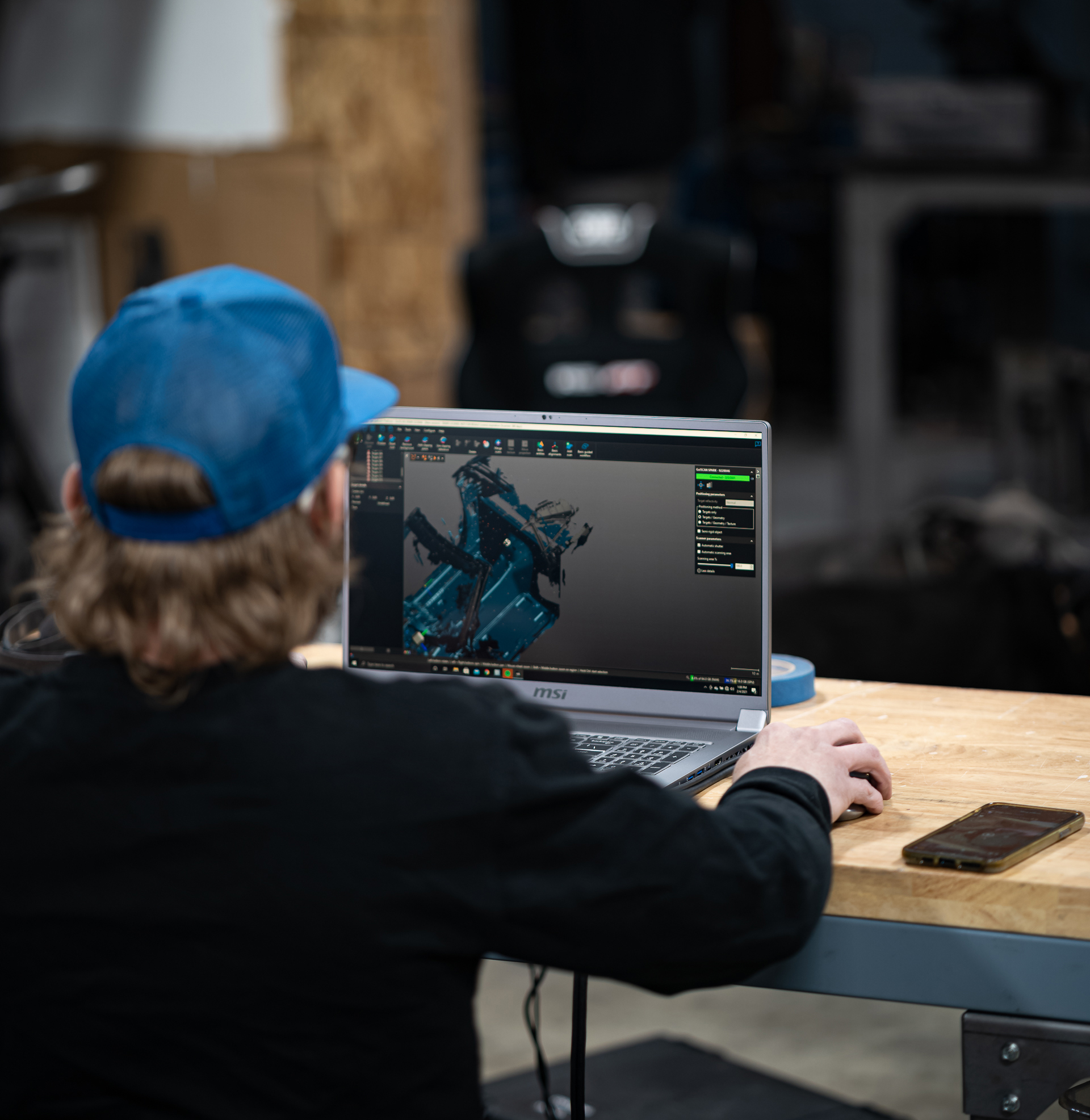 |
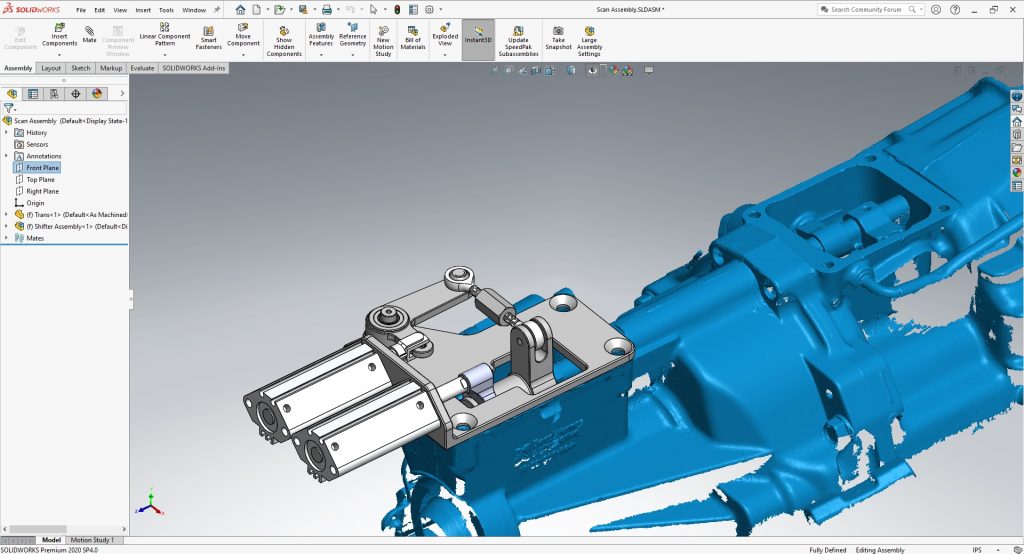 |
Why the Go!SCAN SPARK is a Key Design Element
To build the roll cages in the safest and most efficient way, CageKits uses Creaform’s Go!SCAN SPARK to scan cars’ interiors and create roll cages from that data. The Go!SCAN SPARK features essential characteristics that lead to the unique design of CageKits’s roll cages.
The 3D scanner’s speed and wide field of view are imperative for acquiring the 3D dimensions of the car’s full interior in less than 1.5 hours, including the time needed for the computer to load the data. Then, once the car is scanned, VXmodel is used to clean, align, and process the data, preparing it to be transferred into Solidworks, where the roll cages can be designed on demand.
Another signature feature of the Go!SCAN SPARK is its tracking, which requires fewer targets than other popular 3D scanners. When scanning the whole car, it can scan adequately with a limited number of positioning targets. In addition, it can use texture, geometry, or only a few targets to keep the tracking accurate throughout the whole scan. Therefore, there are many different ways to capture accurate 3D scans quickly with minimal target use.
Moreover, Rob strongly believes that the Go!SCAN SPARK and VXelements have helped him develop his know-how, which led to the launch of CageKits’s unique offer. “The basic reason why we do our roll cage kits this way is because the software and the technology allow us to be far more efficient and far more confident in our design,” says Parsons.
Why Opt for CageKits’ Designs
- Better Design
Installing a roll cage that braces the chassis without a single gap is only possible with a state-of-the-art design process. A design based on 3D data results in a product that is superior to those built from pieces of cardboard or measurements obtained with a vernier caliper or a measuring tape. Having the 3D data makes it possible to design different door bars, for instance. The question, then, becomes simple: How do you want them to fit? Because the 3D data makes it easy for Rob to design a new set of door bars that meet any customer’s special needs.
- Perfect fit
The Go!SCAN SPARK gives Rob the peace of mind that his chassis measurements are accurate and that his design will fit perfectly on the first try. Thus, he can focus on building the parts directly in the CAD file and adjusting for different options according to each customer’s preferences. Above all, he knows that his customers will get a perfect fit when assembling the parts in their vehicle.
- Quality product
Adding roll cage reinforcement makes the car more solid. Handling during launches or tight turns will generally improve with less twisting of the chassis. This added rigidity is dependent on the overall cage design and a tight fit. Only if the design is based on accurate data will the product perfectly fit the car’s interior, adding the needed safety to race in confidence and in style.
Why Choose Creaform as a Partner
Thanks to 3D scanning, CageKits’ roll cages are synonymous with superior fit and aesthetic appeal. In fact, the Go!SCAN SPARK is at the center of Rob’s product development process because it gives him the efficiency, speed, and accuracy that he needs to provide his customers with superior products that fit perfectly on the first try.
Quality is not only offered in Rob’s roll cage kits; it is also present in the partnership he has developed over the years with Creaform. Having a trusted partner gave Rob the edge to push his product development further, and getting a committed client’s feedback helped Creaform improve its product offering. With new 3D scanners in development and new projects on the way, this valued partnership is not close to crossing the finish line.

